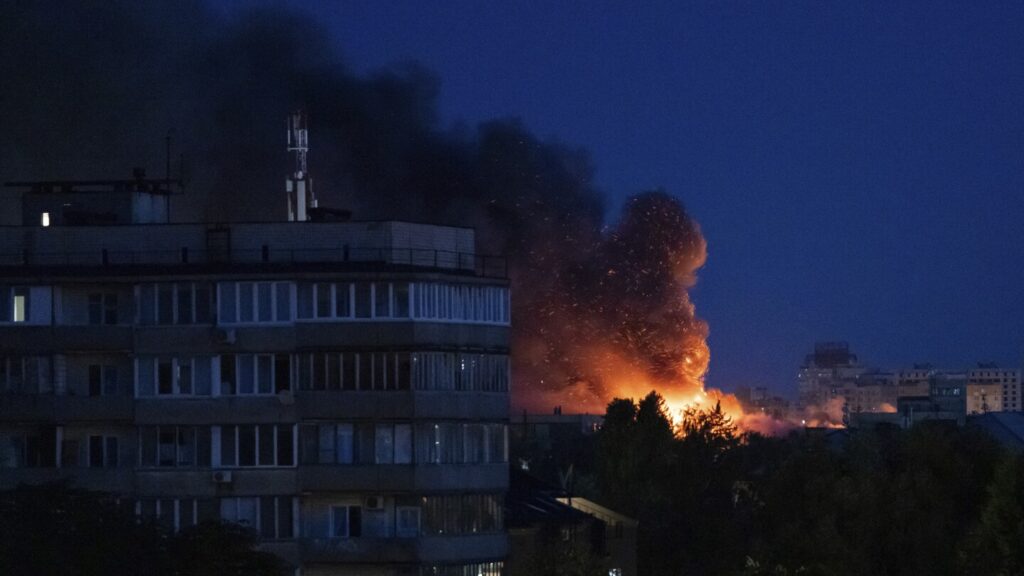
WASHINGTON — The United States is pausing certain weapons shipments to Ukraine, citing concerns over dwindling stockpiles, according to officials who spoke on Tuesday. This decision marks a significant shift as Ukraine faces intensified Russian attacks, raising questions about the future of U.S. military support.
The Biden administration had previously pledged these munitions to bolster Ukraine’s defenses in its ongoing conflict with Russia, which has now surpassed three years. However, the pause reflects a shift in priorities under President Donald Trump, following a thorough review by the Defense Department that highlighted concerns over U.S. stockpile levels.
“This decision was made to put America’s interests first following a review of our nation’s military support and assistance to other countries across the globe,” stated White House spokesperson Anna Kelly. She emphasized the continued strength of the U.S. military, referencing recent U.S. missile strikes against Iran’s nuclear sites as evidence.
Pentagon’s Stockpile Concerns
The Pentagon’s assessment revealed that certain weapons stocks were too low to fulfill the previous commitments to Ukraine. As a result, pending shipments of these items have been halted, according to a U.S. official who requested anonymity to discuss non-public information. The Defense Department has not disclosed which specific weapons are affected by this decision.
“America’s military has never been more ready and more capable,” said Pentagon spokesman Sean Parnell. He noted that the major tax cut and spending package currently moving through Congress aims to modernize U.S. weapons and defense systems to counter 21st-century threats.
Impact on Ukraine and International Relations
The halt in U.S. weapons shipments is a setback for Ukraine, especially as Russia has recently intensified its aerial attacks, complicating peace efforts. The U.S. stoppage was initially reported by Politico, highlighting the challenges Ukraine faces in securing defense systems from its allies.
Since Russia’s invasion of Ukraine in February 2022, the U.S. has provided over $66 billion in military assistance. However, the U.S. has consistently urged allies to contribute air defense systems, a request met with reluctance from some Eastern European countries wary of Russian aggression.
“We continue to provide the president with robust options to continue military aid to Ukraine, consistent with his goal of bringing this tragic war to an end,” said Elbridge Colby, Defense Department undersecretary for policy.
Trump Administration’s Shift in Strategy
President Trump’s recent meeting with Ukrainian leader Volodymyr Zelenskyy at the NATO summit hinted at a potential shift in the U.S. approach. Trump acknowledged Ukraine’s need for U.S.-made Patriot air defense missile systems, which he described as highly effective.
Defense Secretary Pete Hegseth, in testimony before lawmakers, emphasized the administration’s focus on redirecting resources to align with Trump’s top objectives. He argued that a negotiated peace between Russia and Ukraine would bolster America’s global standing, despite Russia’s role as the aggressor.
“This administration takes a very different view of that conflict,” Hegseth stated. “We believe that a negotiated peaceful settlement is in the best interest of both parties and our nation’s interests.”
Historical Context and Future Implications
The shift in U.S. policy comes after Hegseth’s absence from a key international military aid coordination meeting, a group formed by his predecessor, Lloyd Austin, to support Ukraine. This marks a departure from the U.S.’s previous leadership role in the group, now chaired by Germany and the United Kingdom.
As the Trump administration recalibrates its military aid strategy, the implications for Ukraine and the broader geopolitical landscape remain uncertain. The decision underscores the delicate balance between supporting international allies and maintaining U.S. military readiness.
Moving forward, the administration’s approach will likely continue to evolve, with potential impacts on U.S. relations with both Ukraine and its European allies. The situation remains fluid, with ongoing discussions about how best to support Ukraine while safeguarding U.S. defense capabilities.







